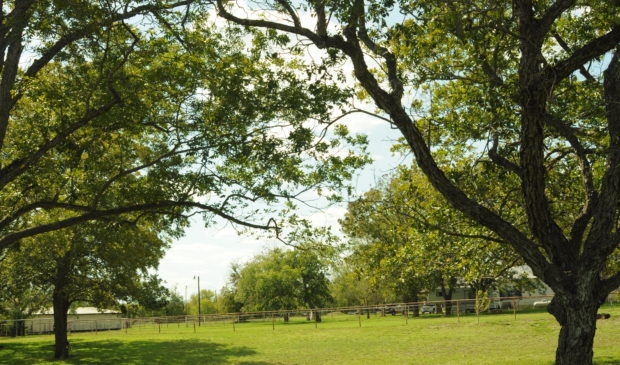Parks board recommends that the Parkland Dedication Ordinance remain untouched
Wednesday, October 30, 2019 by
Jessi Devenyns The city of Austin has had a Parkland Dedication Ordinance as part of its Land Development Code since 1985. The ordinance has been updated three times since its institution, with the most recent iteration in 2016, after two years of engagement from both the public and experts.
As a result of that collaboration, the ratio of parks to residents has stabilized from the nosedive it had endured in previous years, according to members of the Parks and Recreation Board at their Oct. 22 meeting. The city’s goal is to have 24 acres of parkland per 1,000 people.
Based on the current ordinance’s efficacy, the Parks and Recreation Board voted unanimously for a recommendation not to alter it any further in the upcoming land code rewrite.
“I’m going to try to defend this as much as possible,” said Board Member Rich DePalma.
He told the Austin Monitor that the ordinance was a rare compromise between parks groups and developers, which allowed it to survive a challenge during the 2017 legislative session and continue to work to the benefit of both parties.
DePalma explained that the ordinance was purposefully updated independently of the land use code rewrite. “The goal was to address (the ordinance) in 2016 so it would not be an issue that the city and community would need to address during the Land Development Code rewrite.”
There is, however, “not a whole lot of change,” according to Scott Grantham with the parks department, who presented the proposed updates to the Parkland Dedication Ordinance.
The Parkland Dedication Ordinance requires developers of new residential developments and hotel-motel developments to dedicate land for a park and/or pay a fee for the acquisition and development of park facilities.
While the vast majority of what is codified in the 2016 ordinance remains the same, there are two changes proposed in the draft code.
The first change is the codification of the parkland assessment, a departmental process called early determination that permits a developer to ask what their site requirements for parkland dedication will be prior to submitting a site plan or building permit. In the draft code, this rule is proposed to be a codified entitlement for developers.
The second new element is the addition of a parkland dedication bonus, which would allow developers to calculate the gross site area of a parcel with the inclusion of parkland. The alternative would be omitting the portion of the site that is to become parkland, resulting in a smaller gross site area and less impervious cover entitlements. “It’s basically a benefit to the developer,” Grantham said.
Already in the current ordinance, the impervious cover limits can be shared for a site that has dedicated a portion of the acreage to parkland. This permits increased impervious cover entitlements for the developable land.
The Parkland Dedication Ordinance does not currently require commercial-only developments to participate. While there was some discussion about the benefits of introducing the parkland dedication requirement for commercial developers, DePalma told the Monitor, “The challenge to adding commercial and retail properties is that a model doesn’t exist yet.”
Still, board members expressed their concern at developments taking up open space and not preserving physical green space. This was of particular concern with downtown developments where there is limited property. Board Member Laura Cottam Sajbel asked if this lack of available land would increase the contributions to the fee-in-lieu fund and affect the amount of land donated to the city.
“(For) 99.9 percent of our parkland dedications, they dedicate parkland as a combination of land and fee-in-lieu. Very rarely is it all land,” said Randy Scott, a program manager with the Parks and Recreation Department. “Since 1985 we’ve required that land be dedicated only in 6 percent of the cases we’ve reviewed.” Fee-in-lieu payments are used by the city either to buy more parkland elsewhere or purchase amenities within existing parks.
Even with the current configuration allowing for payments in place of land dedication, Scott confirmed that a large portion of Austin’s parkland system is acquired through parkland dedication.
The board voted to recommend that Council retain the current language unchanged during the course of the Land Development Code rewrite. Board Member Nina Rinaldi abstained from the vote.
Chair Dawn Lewis summarized the reasoning for the unanimous opinion. “We really believe in this ordinance. It’s been so important and so impactful,” she said.
City Council is scheduled to vote on the new draft of the land use code on Dec. 9. More information about that process, which is underway, can be found on the the city’s website.
Photo by Aaron Kyle made available through a Creative Commons license.
The Austin Monitor’s work is made possible by donations from the community. Though our reporting covers donors from time to time, we are careful to keep business and editorial efforts separate while maintaining transparency. A complete list of donors is available here, and our code of ethics is explained here.
You're a community leader
And we’re honored you look to us for serious, in-depth news. You know a strong community needs local and dedicated watchdog reporting. We’re here for you and that won’t change. Now will you take the powerful next step and support our nonprofit news organization?










